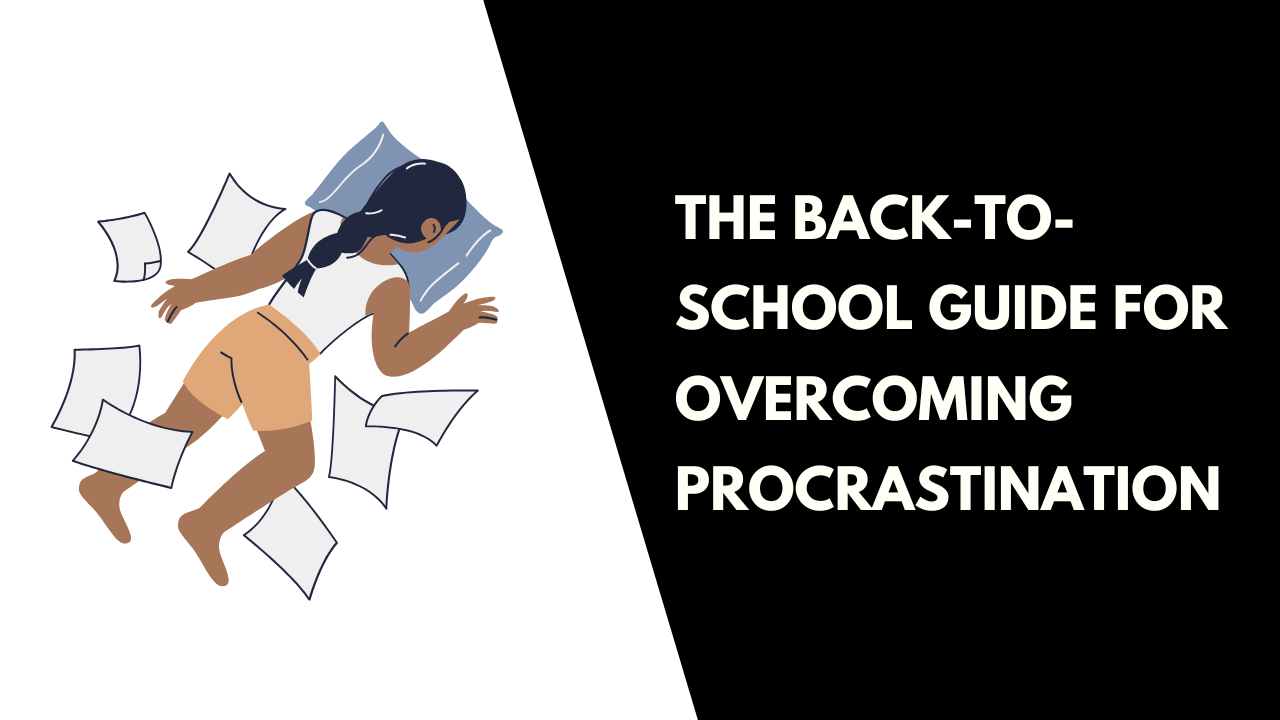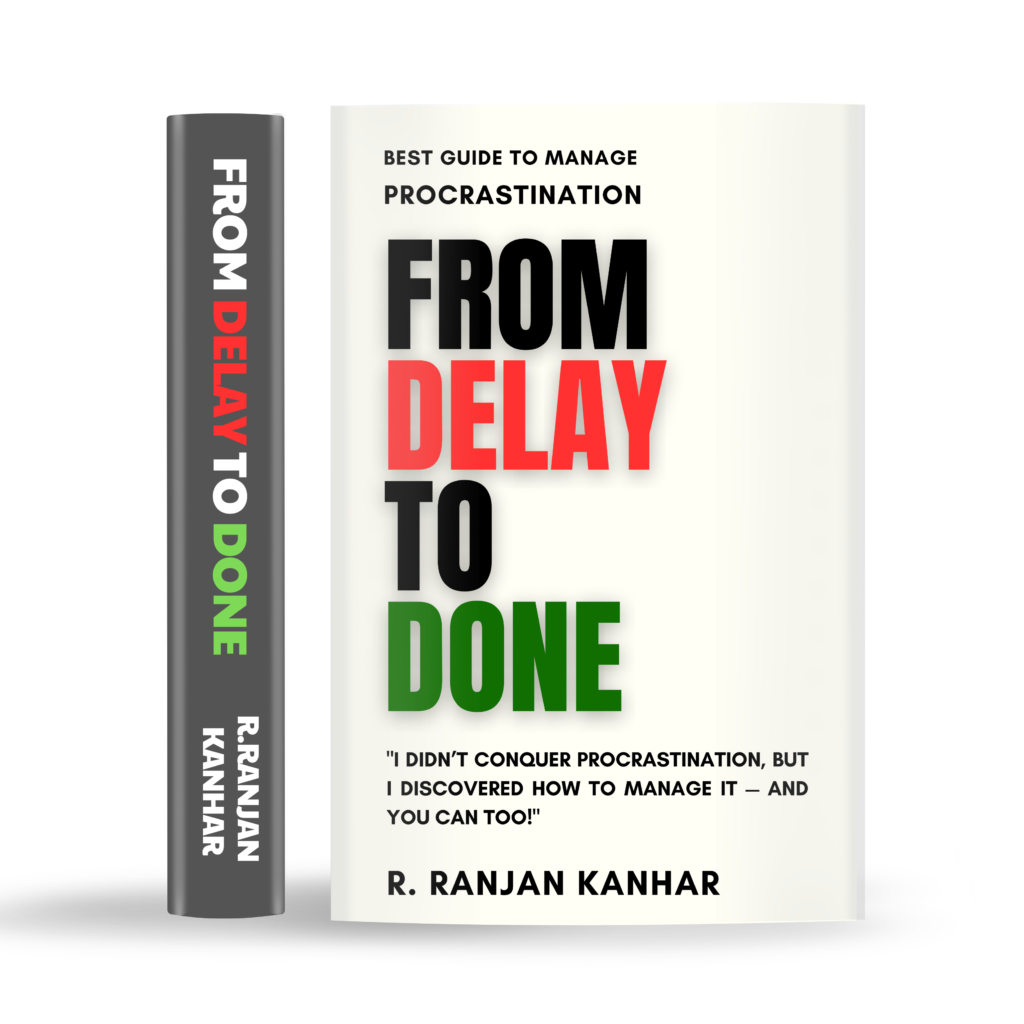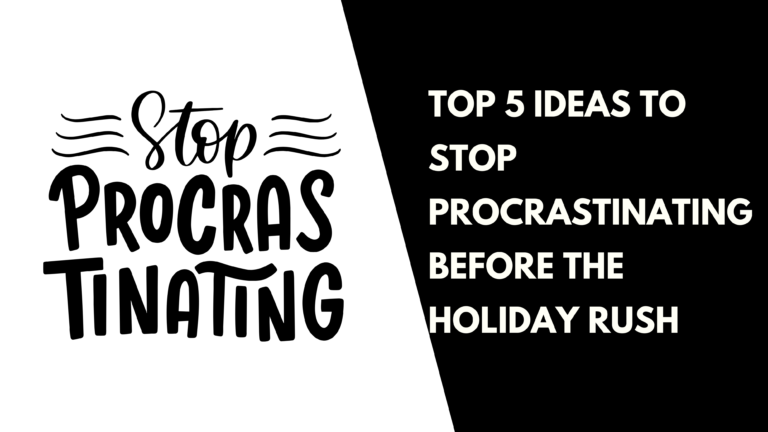The Back-to-School Guide for Overcoming Procrastination
The Back-to-School Guide for Overcoming Procrastination
Introduction
The start of a new school year brings excitement, fresh opportunities, and… the same old habit of putting things off. Sound familiar? You tell yourself, “This semester will be different,” yet, within weeks, you’re back to last-minute cramming, unfinished assignments, and late-night panic sessions.
Table of Contents
ToggleProcrastination isn’t just about laziness; it’s a psychological battle between what we should do and what we want to do. If you’ve struggled with this, don’t worry—you’re not alone! This Back-to-School Guide for Overcoming Procrastination will break down why you delay tasks and how to stop procrastination before it wrecks your academic year.
Let’s dive in with real-life examples and actionable strategies to help you stay ahead this semester.
Why Do We Procrastinate?
Procrastination isn’t just poor time management; it’s often rooted in:
- Fear of failure – “What if I don’t do it perfectly?”
- Lack of motivation – “I’m not in the mood to do it right now.”
- Feeling overwhelmed – “There’s too much to do. Where do I even start?”
- Distractions – “Just one more episode… then I’ll study.”
Think of Sarah, a college student who intends to start her essay a week early. Instead, she scrolls social media, binge-watches Netflix, and tells herself, I’ll start tomorrow. The deadline sneaks up, and now she’s pulling an all-nighter. The result? Stress, exhaustion, and a mediocre grade.
This is classic procrastination, and it happens to all of us. However, with the right strategy, you can overcome it.
1. Create a “Procrastination-Free” Study Schedule
The best way to stop procrastination is to structure your time effectively. Here’s how:
Step 1: Use the Time-Blocking Method
Time-blocking means assigning specific hours for study, breaks, and relaxation. Instead of saying, I’ll study later, set clear slots, like:
- 4:00 – 5:30 PM: Math homework
- 5:30 – 6:00 PM: Break (walk, snack, stretch)
- 6:00 – 7:30 PM: Science revision
Example:
John, an engineering student, used to cram for tests last minute. He switched to time-blocking and found that dedicating short, structured study sessions (instead of all-nighters) improved his focus and retention.
2. The 5-Minute Rule: Trick Your Brain into Starting
Starting is the hardest part. Your brain perceives big tasks as overwhelming, so it avoids them. The 5-Minute Rule is a psychological trick:
👉 Commit to just 5 minutes of work. After that, you’re free to stop if you choose.
Why does this work? Once you start, your brain gets into work mode and usually keeps going.
Example:
Emma dreaded writing her research paper. She told herself, I’ll just write the introduction for 5 minutes. Before she knew it, 30 minutes had passed, and she was halfway through!
Try this technique—most of the time, you’ll keep going after those 5 minutes.
3. Set SMART Goals Instead of Vague Plans
A common mistake students make is setting unrealistic goals. Instead of saying, I’ll study for my history exam this weekend, break it down into SMART goals (Specific, Measurable, Achievable, Relevant, Time-bound).
✔ Example of a SMART Goal:
- Instead of: I will study chemistry this week.
- Try: I will complete 3 chapters of chemistry by Friday, reviewing one chapter per day from 5 PM to 6 PM.
This removes ambiguity and gives you a concrete plan.
4. Identify & Eliminate Distractions
Distractions are the #1 killer of productivity. Identify your biggest distractions and take action.
🚫 Common Distractions & Solutions
✔ Phone Notifications → Enable “Do Not Disturb” mode to stay focused while studying.
✔ Social Media → Use apps like Forest or Freedom to block sites temporarily.
✔ TV & Netflix → Reward yourself with episodes after study sessions, not before.
✔ Friends & Family → Let them know your study schedule to minimize interruptions.
Example:
Jake always got distracted by his phone while studying. He started leaving it in another room and found his focus improved dramatically.
5. Use the Pomodoro Technique: Study Smarter, Not Longer
The Pomodoro Technique is a scientifically backed method that boosts productivity:
- Work for 25 minutes (fully focused).
- Take a 5-minute break (relax, stretch).
- Repeat 4 times, then take a longer break.
Why does this work? Short bursts of focus prevent burnout while maintaining efficiency.
Example:
Mia struggled with long study sessions. After switching to Pomodoro, she found herself more productive and less mentally exhausted.
Try it! Set a timer and experience the difference.
6. Find an Accountability Partner
Accountability increases motivation. When someone else knows your goals, you’re more likely to stick to them.
✔ How to find an accountability partner:
- Team up with a friend and set weekly study goals.
- Check in with each other on progress.
- Use study groups (even virtual ones) to stay accountable.
Example:
Daniel and his friend Alex struggled with procrastination. They made a pact to study together every evening for an hour. Knowing that someone was counting on him kept Daniel committed.
7. Reward Yourself to Stay Motivated
Your brain loves rewards! Create a system where completing a task earns you a small treat.
🎯 Examples of Reward Systems:
✔ Finish an assignment? → Watch an episode of your favorite show.
✔ Complete a study session? → Enjoy a snack or a short walk.
✔ Meet a weekly goal? → Plan a fun weekend activity.
Example:
Lily, a medical student, struggled to stay motivated. She started rewarding herself with her favorite coffee after finishing difficult chapters. The anticipation kept her going.
8. Develop a Growth Mindset: Shift Your Thinking
If you see procrastination as a failure, you’ll stay stuck. Instead, adopt a growth mindset—believe that with effort, you can improve.
Instead of saying: “I’m bad at time management.”
Say: “I can learn better time management skills.”
Example:
Kevin used to believe he’d always be a procrastinator. But after adopting small changes—like using time blocks and the 5-minute rule—he started seeing progress. This motivated him to keep going.
Final Thoughts: Your Back-to-School Action Plan
Procrastination is a habit, not a permanent trait. The secret is to begin with small steps and remain consistent.
✅ Quick Recap:
✔ Use time-blocking to schedule study sessions.
✔ Apply the 5-Minute Rule to start tasks.
✔ Set SMART goals for better clarity.
✔ Remove distractions that derail focus.
✔ Try the Pomodoro Technique for productivity.
✔ Get an accountability partner to stay on track.
✔ Use rewards to boost motivation.
✔ Adopt a growth mindset and believe in progress.
This Back-to-School Guide for Overcoming Procrastination is your roadmap to success. The new semester is your chance for a fresh start—make it count!
Now, take the first step: Which of these strategies will you implement today? Let me know in the comments! 🚀
“Stop postponing your dreams! From Delay to Done is your ultimate guide to conquering procrastination. Grab your copy today on Amazon!



